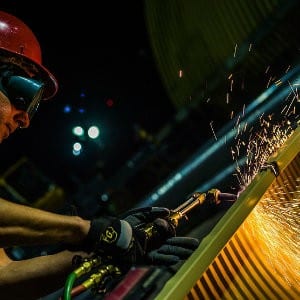Every day, millions of Americans head off to work, never imagining that a simple accident might change their lives forever. But accidents occur in the workplace with surprising regularity. In New York, burns are the most commonly experienced work-related injury. In a matter of seconds, the damage done by fire, chemicals, electrical currents, or other hot substances can leave a victim scarred and disabled.
 Causes Of Burns
Causes Of Burns
When most people think of burns, they think of a fire. There are, however, many ways in which a victim can be burned. Accidents that result in burns may involve:
Chemicals
When the skin is exposed to an irritant, such as an acid or a base, a burn can happen. Some of the most common irritants that cause chemical burns are car battery acid, ammonia, pool products, and bleach.
Fire
Stove tops, tools used for soldering, and unexpected explosions are just a few ways in which employees can be exposed to fire in the workplace.
Hot Substances
Some jobs require that substances such as food, tar, water, and metal be heated. Exposure to these hot materials can easily burn the skin.
Electrical
Electrical burns occur when the body completes a circuit is flooded with electrical currents. The current can take any path through the body and leave the victim with severe burns on the skin, organs, and even bone. The amount of damage caused depends on the strength and duration of the electrical current that the victim is exposed to. If the voltage is high enough, the shock can also cause the victim’s clothing to catch fire.
Common Accidents

- spilled or dropped hot liquids and materials
- electrocution from live wires
- explosions
- fire
- inhalation of chemicals
- welding injuries
- unexpected release of hot steam
The Burn Scale
The medical community has a scale with which doctors can measure burns and decide which treatment options are best. There are four levels on the burn scale:
1st degree
1st degree burns impact only the outer layers of skin, the epidermis. It takes 3-5 days for the injury to heal. While these burns are considered the most minor, they can be quite painful and require hospitalization for pain control and fluids. Sunburns are an example of 1st degree burns.
2nd degree
2nd degree burns can be partial or full thickness. Partial thickness burns involve the upper layers of the dermis, blister, and may take 10-21 days to heal. Full thickness burns can destroy the entire epidermis and the upper layer of the dermis, and will likely need skin grafting in order to heal properly.
3rd degree
3rd degree burns destroy all layers of the skin, are not painful, and may appear leathery. While a lack of pain may seem like a good thing, doctors know immediately that the victim has sustained serious injuries which may have damaged nerves. Skin grafting is necessary in order for the burn to heal. These burns can take months or even more than a year to heal and often require extended hospital stays.
4th degree
Fourth degree burns involve the skin, muscle, and the bone. Nearly every time the burn requires amputation and can be life-threatening if the burn is in an area that cannot be surgically removed.
The High Cost Of Medical Care
Burns can be very expensive to treat. Moderate burns may cost as much as $206,000 in medical care and severe burns easily pass $1,000,000. Those average costs are without complications. Typical complications can be:
- disfigurement and scarring
- psychological complications
- skin breakdown
- infections, and
- skin graft failure
These complications can add anywhere from $16,000 – $120,000 in additional medical expenses.
OSHA Safety Requirements
The Occupational Safety & Health Administration has a set of standards that they have put into place in order to prevent burn injuries and fatalities on the job. These standards include:
- providing fire exits that are clearly marked and providing employees with an emergency plan in case of fire. There must be a minimum of two fire escapes which are not near each other
- placing fire extinguishers in accessible locations and providing training on how to use the extinguishers
- providing employees who work with chemicals, hot substances, or electricity with proper gear for protection
- placing barricades with warning signs around materials that can be particularly hazardous
If burn injuries occur while on the job and it is determined that an employer did not follow the safety standards set by OSHA, it is possible that they may face a citation and fines.
The Rights Of Victims
Anyone who has been burned at work due to the negligence of another party has the right to file a workers’ compensation claim.
Workers’ Compensation
Workers’ Compensation is supposed to protect anyone who is injured on the job, regardless of who was at fault for the accident. However a shocking 50% of all workers’ compensation claims are denied. Those claims that are approved rarely cover all of the losses that the employee suffers.
If you or your loved one has been burned on the job, it is possible that you may be able to pursue legal action against the negligent party. It is also possible that the negligent party is not your employer. In some cases, the manufacturer of a faulty product or a company which was in charge of installing or maintaining the product which caused your accident may also be held liable.
By pursuing legal action, the victim may be able to recover compensation for pain and suffering, medical expenses, and lost wages.

 Causes Of Burns
Causes Of Burns